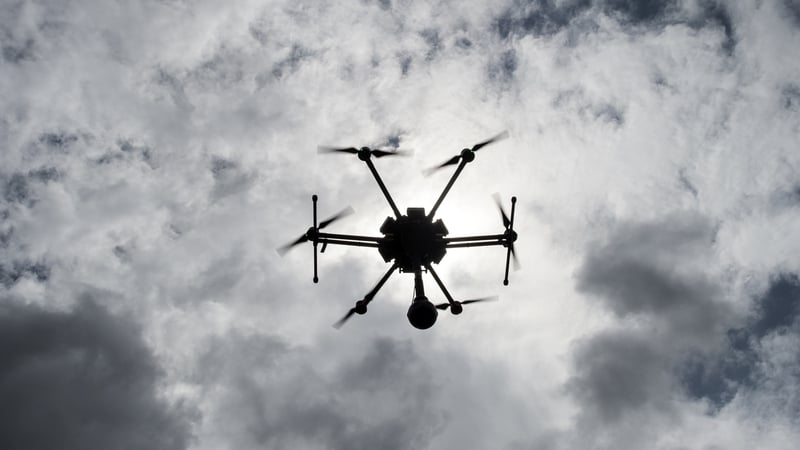
Coming in to land: the Gatwick Airport shutdown highlighted the need for new security systems in an era of ubiquitous drone availability
Analysis: drone technology is developing in leaps and bounds and anti-drone technology must keep up to ensure public safety
By Boris Galkin, CONNECT
In December 2018, the world watched on as Gatwick Airport in the UK battled with a repeated drone incursion that grounded all flights and stranded tens of thousands of travellers. This incident once again highlighted the need for new security systems in an era of ubiquitous drone availability. So what solutions exist today for stopping malicious drone operations, and what solutions are expected to appear soon?
From the perspective of security, drones can be classified under two categories: fully assembled off-the-shelf drones made by drone manufacturers and DIY drones assembled from different components. With the former, the best option for ensuring lawful drone use is to work with the manufacturers to include compulsory security mechanisms into the drones being sold.
From RTÉ Six One News, a report on how drone risk assessment will be carried out at Irish airports
This could include built-in airspace maps which prevent the drone from flying in protected airspace, radio beacons which transmit drone information to nearby authorities during flight and backdoor security access that could allow members of law enforcement to take over and land unlawful drones. Airspace geofencing is already implemented in many of the popular drone brands and safety features like radio beacons are expected to become industry standard very shortly.
DIY drones pose a bigger security concern as a knowledgeable drone operator can assemble a device which lacks the security features discussed above. To deal with this class of drone, active defence systems need to be developed and deployed in high-risk areas.
From RTÉ Radio 1’s Drivetime, Captain Evan Cullen, president of the Irish Air Line Pilots Association, on pilots’ concerns around the use of drones in Irish airspace
Another option for tracking the drone is by listening to its radio transmissions. If a drone is not flying autonomously, it is using a radio link to communicate with its operator on the ground. If this radio signal can be identified then not only can the drone itself be tracked, but so can its operator. The difficulty with this option is that drone radio signals typically use the Wifi spectrum for communication, which means that the radio signal will be hidden among other Wifi device signals. New, more intelligent types of radios are needed to be able to identify the correct signal and track the source.
Other types of tracking are also possible, based on drone emissions such as thermal output or noise. We expect a combination of the above technologies to be used for defending airspace, to maximise effectiveness and reduce the chances of false positives.
Once a drone has been identified, it needs to be stopped. There are numerous options for how to do this, which can be roughly grouped into three categories: stopping the drone operator, interfering with drone communications and physically stopping the drone. To stop the operator, you require law enforcement to quickly locate his or her location. This can be achieved by listening for the remote control signal (see above) or tracking the drone to see where it goes. Police drones equipped with cameras can also be sent out to search for the guilty party.
From RTÉ 1’s Prime Time, Travel Extra editor Eoghan Corry on how well prepared is Irish air space for a drone attack
Interfering with drone communications means jamming radio signals by transmitting a signal on the same frequency with so much power that the target device can’t receive its own signal. This jamming can be applied to the drone-operator radio signal (if the drone isn’t flying autonomously) or the GPS signal which the drone uses to know where it is. The downside of jamming is the collateral damage it causes. Jamming the Wifi frequencies can cause other Wifi devices in the area to be affected, while jamming the GPS signal can be outright dangerous depending on who is using GPS nearby. In the case of Gatwick airport, it is possible that other aircraft flying above could be negatively affected if GPS jamming was used.
Physically stopping the drone is exactly what it sounds like, this can be achieved by shooting the drone with a big gun (for example, ) or cooking it with a high-power laser. A cheaper (and possibly safer) alternative is to use other drones to catch the intruder. These could be drones carrying nets or even cheap drones designed to crash into the target drone at full speed and ram it out of the sky.
READ: how drones will revolutionise farming
Drone technology is developing in leaps and bounds, and anti-drone technology must keep up to ensure public safety. As comical as it may seem today, the next time a drone incursion happens at a major international airport could see a fully-fledged air battle between several remote-controlled aircraft not much bigger than children’s toys.
Boris Galkin is a PhD researcher at CONNECT in Trinity College Dublin
To watch full article with appropriates videos follow this link

